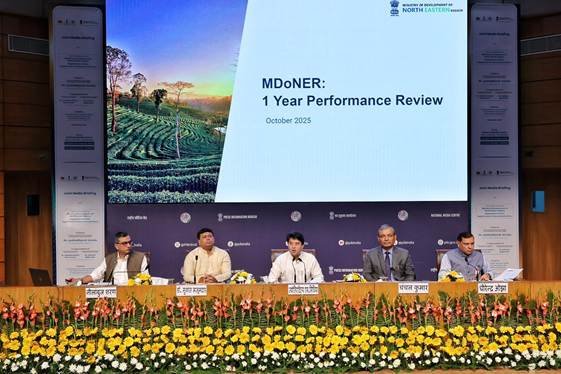Study gives more than 60 policy inputs
India faces challenges in building its port related infrastructure, which is critical for achieving 5% share in the world exports, according to a study which has outlined some solutions.
To achieve a target of 5% share in world exports, India’s exports need to grow at an average rate of over 26% for the next five years, according to a study ‘Port Logistics: Issues & Challenges in India’.
The Dun & Bradstreet study has suggested more than 60 policy inputs across operations, infrastructure and connectivity which have been classified under 12 broad policy input.
It has made policy recommendations following a coverage of 14 ports which handle around 67% of India’s maritime trade, and engaging with 700 respondents pan India.
“To increase India’s share in world exports, we need to strengthen India’s industrial sector and increase its product competitiveness,” said Manish Sinha, Managing Director, Dun & Bradstreet – India.
Stressing the need to improve the infrastructure for globally competitive trade, he said “Ports are a key part of trade infrastructure. Hence, Dun&Bradstreet offered to do this study to NITI Aayog.
“We are confident that the ground-level issues highlighted and the measures suggested to resolve the challenges in the given time frame will help in further facilitating ease of doing trade in India,” said Sinha.
“It is expected that a focused approach towards arriving at an actionable and effective solution of the addressable issues that have been identified in the study could largely bring down the transaction time and cost of trade, and provide impetus to India’s ambition to climb up the ranks in the Ease of Doing Business rankings,” said Arun Singh, Lead Economist, Dun & Bradstreet – India.
The study has also called for ‘ensured transparency’ in Shipping line charges & operations and regulate Shipping lines/promote domestic Shipping lines.
It calls for a common digital platform – Bring all stakeholders on a single platform which can be named as “National Portal for Cargo Facilitation (NPCF)”
For enhancing customs clearance process, it suggest:
promotion of 24×7 operations across stakeholders;
periodical performance audits/monitoring of terminals & resolution of tariff disputes;
standardise trade processes across ports and stakeholders;
link warehouses with railways;
augment rail infrastructure & operations;
overhaul physical infrastructure & enhance productivity;
rationalise documentation and process all documents through NPCF;
and timeframe for regulatory clearances.
Main Highlights
The study involved identifying the issues and challenges faced by various stakeholders while conducting trade at India’s 13 major ports and one non-major port Mundra which handle around 67% of India’s maritime trade.
The scope of this study is limited only to container and bulk cargo handled at these ports and does not cover liquid cargo.
The study involves primary survey of around 700 participants (i.e. exporters, importers, CHAs, freight forwarders and industry stakeholders) pan India.
A Port Performance Index was designed for all the ports under study on the basis of primary and secondary research.
Three broad categories of database/information have been taken into consideration for the construction of the Port Performance Index, i.e. primary quantitative, primary qualitative and secondary quantitative. Looking at 13 major ports, 3 ports (JNPT, Kamarajar, Vizag) have received ‘Good’ score; 7 ports (Cochin, Kandla, Paradip, Chennai, Mormugao, New Mangalore and VOC) have received ‘Average’ score and & 3 ports (Haldia, Kolkata and MbPT) have received ‘Poor’ score.
Five issues, namely port congestion, customs clearance (including scanning & ICEGATE), shipping line issues & charges, documentation & paperwork, and regulatory clearance are the most common problems across ports and out of these just 4 issues, constitute 80% of total issues causing detention & demurrage.
The average cost incurred by the trade on port logistics as a percentage of the total value of consignment is 15%. The average port logistics cost at the major bulk cargo ports on the east coast (16%) was found to be slightly higher as compared to the west coast (14%).
Break-up of the total port logistics cost reveal shipping line charges account for the major share of cost (36%), followed by detention & demurrage (22%).
Around 85% of respondents were charged detention and demurrage up to 20% of the time they trade in a year.
The three major findings of the report are – Processes and operations across the ports are not standardised or uniform; Costs and time for key processes are unpredictable and there is an unacceptable level of variation across ports as well as within port; Several government initiatives taken need to be followed through to completion. fii-news.com











